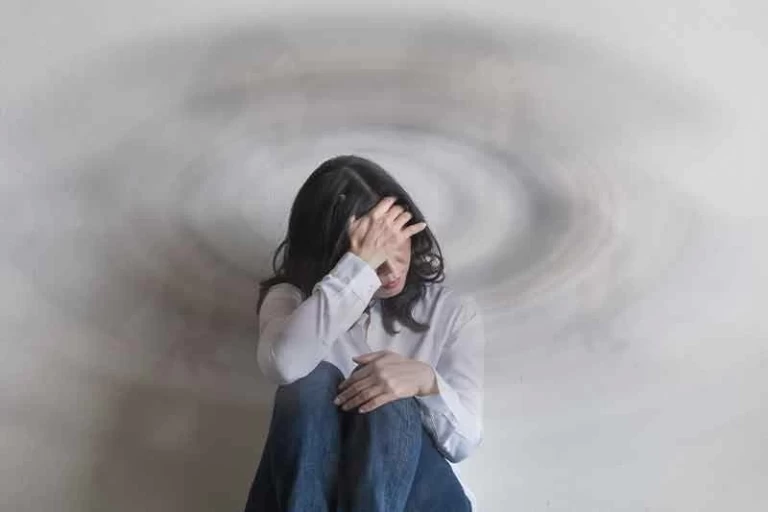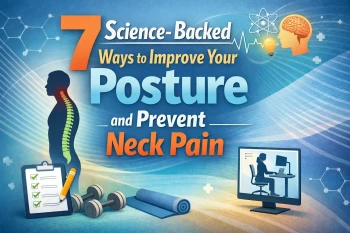
Charleston Upper Cervical Chiropractic Treatment for Vestibular Disorder
What is a Vestibular Disorder?
The vestibular disorder is when there is damage to the vestibular system. The vestibular system includes part of the brain and the inner ear that help us control our balance and eye movements. When someone suffers from a vestibular disorder, it can be difficult for them to perform daily tasks or even getting out of bed in the morning.
What is Vestibular Disorder Symptoms?
Depending on the type and severity of the vestibular disorder someone has, the symptoms can vary. Keep this in mind as not all symptoms will be the same for each person with vestibular disorder and other vestibular disorder symptoms are possible.
-
Vertigo and Dizziness - Having a vestibular disorder mean the vestibular system is damaged and the vestibular system includes parts of the inner ear and brain that help your balance and eye movements.
- Vision - Vision disturbances may occur when encountering vestibular disorder. Their visual field may seem to jiggle or bounce during head motion or they could have double vision. These visual disturbances might resolve as they keep their head still and because of these visual disturbances, patients may often consult an eye care professional first before realizing they have a vestibular disorder.
- Balance and Spatial Orientation - Damage to the vestibular system can greatly affect a person’s balance and their ability to identify their body’s position in relation to their surroundings. They may become clumsy, begin to stumble often, have an inability to walk straight, struggle to maintain straight posture in which the head tilts to the side, or often touch or hold onto their surroundings while standing or while seated.
- Hearing Changes - Those who suffer from the vestibular disorder may have hearing loss, distorted/fluctuating hearing, sensitivity to loud noises or environments, or tinnitus (a phantom noise that sounds like a ringing, whooshing, buzzing, whistling, or roaring). Loud sounds that happen suddenly could increase their symptoms of dizziness, imbalance, or vertigo.
- Cognitive Changes - Vestibular disorders can cause one to become easily distracted and have difficulty concentrating and paying attention. Some other cognitive changes include forgetfulness, confusion, difficulty comprehending, disorientation, trouble understanding conversations, mental and/or physical fatigue, and short-term memory lapses.
- Psychological Changes - When vestibular disorder begins to change one’s life, it can cause psychological changes to occur. Some psychological changes that begin due to living with the vestibular disorder include anxiety, panic, social isolation, depression, as well as the loss of self-confidence, self-reliance, and self-esteem.
What Causes Vestibular Disorder?
The following are known causes of vestibular disorder:
-
Head Injury - Any trauma to the head and neck could result in injuring your vestibular system. Those who have had their vestibular system injured from a head injury may have problems with balance, experience dizziness, or vertigo (where the room seems to be moving around you or you feel to be moving while being still).
- Aging - The natural aging process can affect your vestibular system. Dizziness and imbalance are common vestibular disorder symptoms in the elderly; however, a vestibular function typically remains undamaged until more advanced ages.
- Viral Infection
A viral infection can inflame your inner ear or nerves that connect the inner ear to the brain. This can affect your vestibular system’s normal functions and may cause injury to occur.
Treatment Options for Vestibular Disorder
The following are common treatments used to help those with the vestibular disorder:
-
Vestibular Rehabilitation Therapy - Also known as VRT, this treatment helps the patient by guiding them with specific head, body, and eye exercises in hopes to retrain the brain to recognize and process signals from the vestibular system and synchronize them with the information from their vision and perception or awareness of position and body movement. Depending on the patient, different exercises may be recommended.
- Adjustments to Diet - Some patients find certain modifications to their diets to be helpful. This includes giving up nicotine and types of medication to help reduce their symptoms.
- Medication - Medication for vestibular disorders depends on the severity of the disorder. For the acute phase that lasts up to five days, vestibular suppressants could be prescribed to reduce motion sickness or anti-emetics to help with nausea. Other medications used for treating vestibular disorders are steroids, antibiotics (if a middle ear infection is present), and antiviral – all depending on the patient’s situation. For the chronic phase, certain medications used during the acute phase that can make the brain sleepy are often not appropriate for long-term use; therefore, the chronic phase will need to be treated differently by avoiding movements and/or using vestibular suppressants daily.
- Surgery - Surgery for the vestibular disorder is an option for patients who have not seen an improvement in their vestibular disorder symptoms with the use of medication. Different types of surgery are available and depend on the patient’s diagnosis and physical condition. The types of surgeries available for the vestibular disorder can be either corrective or destructive. For corrective surgery, the goal is to repair the inner ear function or to stabilize it. For destructive surgery, the goal is to stop the production of sensory information or prevent the transmission from the inner ear to the brain.
It is important to note the most common treatments are meant to help one who has a vestibular disorder reduce their symptoms. These treatments do not pinpoint the underlying cause of the vestibular disorder and therefore may or may not be successful in reducing the symptoms or getting rid of them completely.
To have the best chance of reducing vestibular disorder symptoms, it is recommended to try an all-natural treatment first that could help repair or heal the vestibular system.
What is Upper Cervical Chiropractic?
Upper cervical chiropractic focuses on your upper cervical spine (located right beneath the base of your skull). The upper cervical spine plays a significant role in aligning the rest of your spine as well as protecting your brain stem.
The brain stem allows your brain to body communication to flow smoothly and if any disruption occurs, these signals can become misinterpreted or fail to be sent. This means the body could fail to repair and heal itself properly and fail to fight against infections.
When pressure is placed upon the brain stem from an upper cervical misalignment caused by aging, injury, or stress over time, the vertebrae pushes against the brain stem and causes disruptions in the signals.
This pressure and disruption can cause a rise in blood pressure, numbness and tingling to occur in the body, changes in heart rate, affect breathing and sleeping, and even send false signals of pain throughout the body.
The goal of the upper cervical chiropractor is to help the patient maintain optimal upper cervical spine health so the brain stem can continue functioning properly to take care of the body in ways medication and surgery cannot.
How is Upper Cervical an Effective, All-Natural Treatment for Vestibular Disorder?
Vertigo is a symptom that has been linked to improper alignment of the upper cervical spine as misalignment can affect the structure of the inner ear (which manages your balance). When it comes to ear infections, the brain stem allows the body to properly drain the ear and without proper maintenance, it can cause an infection.
Any misalignment pressing against the brain stem can cause vertigo or ear infections to occur.
The inner ear vessels, nerves, and structure sits very close to the atlas vertebra located in your upper cervical spine. A misalignment can compress the nerves and affect the structure of the inner ear along with its functions.
With the vestibular system including part of the brain and inner ear, it makes sense that an upper cervical misalignment could bring on a vestibular disorder.
For treating a vestibular disorder, gentle and precise adjustments are made to help realign the upper cervical spine. This allows pressure to be taken off surrounding nerves and the brain stem for proper communication. When the brain stem can allow proper communication between the brain and body, the repair and healing process begins.
The goal of the upper cervical chiropractor is to adjust the patient as little as possible. Depending on the patient, more adjustments may be needed; however, fewer adjustments will be needed over time until the upper cervical spine grows strong enough to hold the proper adjustment on its own.
Because upper cervical is a natural treatment that allows the body to heal and repair itself, many patients who have tried medication and surgery still have great outcomes with an upper cervical treatment.




Leave a comment